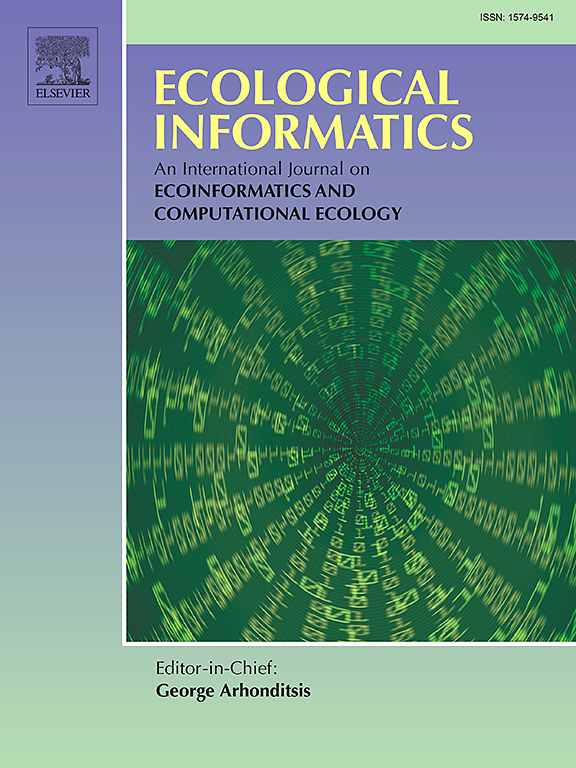Driving forces and prediction of urban open spaces morphology: The case of Shanghai, China using geodetector and CA-Markov model
IF 5.8
2区 环境科学与生态学
Q1 ECOLOGY
引用次数: 0
Abstract
Urban open spaces offer both environmental and social benefits. However, comprehensive studies that integrate both quantitative and qualitative evaluations of the factors driving change in these spaces and their long-term predictions are lacking. Most existing studies concentrate on land-use development rather than conducting empirical research specific to urban open spaces in Shanghai. This study addresses this gap by employing a geographic detector (geodetector) to analyze the influence of various driving factors on open-space changes. These factors were then used as weight values in a multicriteria CA-Markov model to simulate and predict change in Shanghai's urban open spaces by 2050. The advantage of analyzing driving forces lies in their ability to capture the multifactor synergy influencing change in urban open spaces, aligning with the aim of this study to quantitatively evaluate the interaction between natural, climatic, and socioeconomic factors. Additionally, semi-structured interviews were conducted with 10 policymakers and planners to assess the reliability of the quantitative predictions. The results indicate that socioeconomic factors are the primary drivers of change in urban open spaces. Specifically, the interaction between the normalized difference vegetation index (NDVI) and population density (PD) emerged as the most influential variables. For prediction outcomes, the unconstrained scenario predicts a decrease in open-space area from 5610.94 km in 2020 to 5124.36 km in 2050. The planning intervention scenario anticipates minimal changes in Shanghai's total urban open-space area with almost no floating changes. However, the economic development scenario predicts a rapid decline in open spaces. Experts and planners evaluated these three scenarios and confirmed the reliability and accuracy of the prediction models. The methods and findings of this study can support zoning planning for urban open-space systems in other cities and regions.城市开放空间形态的驱动力与预测:使用地理探测器和 CA-Markov 模型的中国上海案例
城市开放空间具有环境和社会效益。然而,目前还缺乏对推动这些空间变化的因素及其长期预测进行定量和定性评估的综合研究。现有研究大多集中于土地利用的发展,而不是针对上海城市开放空间进行实证研究。本研究针对这一空白,采用地理探测器(geodetector)来分析开放空间变化的各种驱动因素的影响。然后将这些因素作为多标准 CA-Markov 模型的权重值,模拟并预测 2050 年上海城市开放空间的变化。分析驱动力的优势在于能够捕捉影响城市开放空间变化的多因素协同作用,这与本研究定量评估自然、气候和社会经济因素之间相互作用的目的相一致。此外,还对 10 位决策者和规划者进行了半结构式访谈,以评估定量预测的可靠性。结果表明,社会经济因素是城市开放空间变化的主要驱动力。具体而言,归一化差异植被指数(NDVI)和人口密度(PD)之间的相互作用成为最具影响力的变量。在预测结果方面,无约束情景预测开放空间面积将从 2020 年的 5610.94 平方公里减少到 2050 年的 5124.36 平方公里。规划干预情景预测上海城市开放空间总面积变化极小,几乎没有浮动变化。然而,经济发展情景预测开放空间将迅速减少。专家和规划师对这三种情景进行了评估,确认了预测模型的可靠性和准确性。本研究的方法和结论可为其他城市和地区的城市开放空间系统分区规划提供支持。
本文章由计算机程序翻译,如有差异,请以英文原文为准。
求助全文
约1分钟内获得全文
求助全文
来源期刊

Ecological Informatics
环境科学-生态学
CiteScore
8.30
自引率
11.80%
发文量
346
审稿时长
46 days
期刊介绍:
The journal Ecological Informatics is devoted to the publication of high quality, peer-reviewed articles on all aspects of computational ecology, data science and biogeography. The scope of the journal takes into account the data-intensive nature of ecology, the growing capacity of information technology to access, harness and leverage complex data as well as the critical need for informing sustainable management in view of global environmental and climate change.
The nature of the journal is interdisciplinary at the crossover between ecology and informatics. It focuses on novel concepts and techniques for image- and genome-based monitoring and interpretation, sensor- and multimedia-based data acquisition, internet-based data archiving and sharing, data assimilation, modelling and prediction of ecological data.
 求助内容:
求助内容: 应助结果提醒方式:
应助结果提醒方式:


